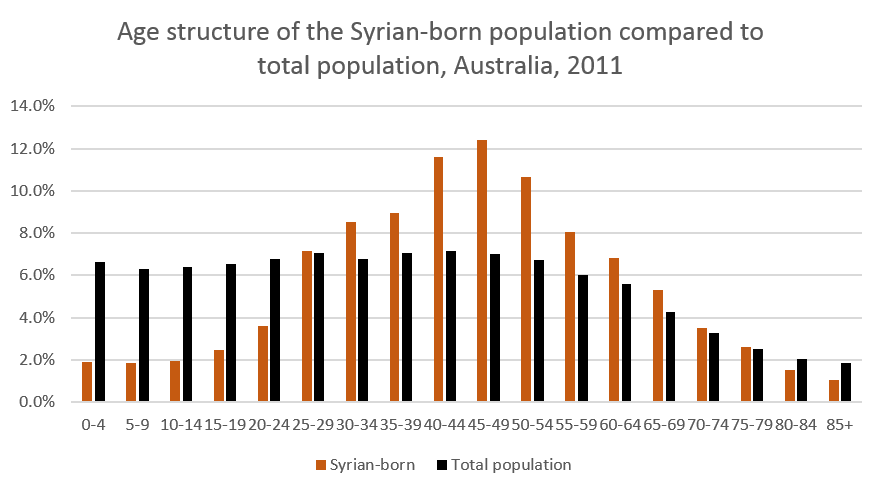At .id, we welcome the news that Australia will be taking 12,000 Syrian refugees this year, in addition to our regular intake of refugees of around 13-14,000. This is an excellent response to the crisis, providing a home for thousands of people who have abandoned their homes due to persecution and war, and will add to the strength of our diverse, multicultural community, and economy.
But it got me thinking – Syria is not one of the countries that springs to mind when you think of Australia’s immigration history. How many are here already and where do they live?
The 2011 Census showed 8,713 people born in Syria living in Australia. This is quite a small community compared to some of the larger groups, for instance we have over 76,000 from neighbouring Lebanon and 33,000 from neighbouring Turkey. And compared to Greece (100,000), Italy (185,000) and China (319,000) it is very small.
This number increased about 30% from 2006, when 6,956 were recorded. With the new refugee intake we should expect this number to triple for the next Census, because, in addition to the 12,000 just announced, Australia has already taken in approximately 3,900 Syrian migrants since the 2011 Census up to June 2015, three-quarters under the humanitarian migration stream (Source: Department of Immigration and Border Protection – Settlement Database).
A larger number of people – just under 14,000 – indicated Syrian ancestry at the 2011 Census. Almost half of these were born in Australia, with most of the rest from Syria and Lebanon. Interestingly only about half of those born in Syria indicated Syrian ancestry, with the rest being primarily a mix of Assyrian (the ancient bronze-age empire from which the country is named) and Armenian (evidence that Syria itself has taken in large numbers of refugees from the Armenian genocide a century ago). There are also quite a few of Lebanese, Iraqi, and indeed Australian ancestry.
The geographic distribution of Syrians in Australia is similar to that of Lebanese, with NSW alone having 61% of the total, and nearly 90% being in NSW and Victoria combined.
.png?width=899&height=420&name=Syrian-in-Australia%20(1).png)
The largest Syrian communities at the local government level are currently in Bankstown, NSW (944) and Fairfield, NSW (899), as well as Hume, Vic (598). These areas also have large Lebanese and Turkish communities.
Governmental decisions have more influence on the initial location of settlement of refugees than any other migrant group. So it will be interesting to see if some of the rural and regional communities which have taken in other refugee groups will be part of creating new Syrian communities, or if they will predominantly be located in the metropolitan areas currently having significant numbers.
There has been quite a bit of discussion about the religion of Syrian refugees, with some calling for resettlement of persecuted Christian minorities first. Of the Syrian-born in Australia in 2011, there was a real mix of religions, including 35% Islam, 16% Catholic, 7% Greek Orthodox, 6% Armenian Apostolic, 4% Syrian Orthodox, and 3% Druse. There were also 3% with No Religion.
Another interesting fact about those born in Syria – they have relatively high education levels compared to many migrant groups, with 14.2% having a bachelor degree or higher qualification in 2011, only a little below the Australian average of 18.8%. They are also older than many of the migrant groups, with an age structure similar to those born in Lebanon, and a peak of population in their 40s and 50s.

This is indicative primarily of a wave of migration during the 1980s
This may well change, as refugees on the whole tend to be younger. Indeed many of the characteristics of the Syrian community may well change for the 2016 Census, by which time the numbers will have tripled. We look forward to seeing the results of Australia’s newest refugee resettlement in our long and proud history of providing a home for displaced peoples around the world.


.png?width=899&height=420&name=Syrian-in-Australia%20(1).png)










